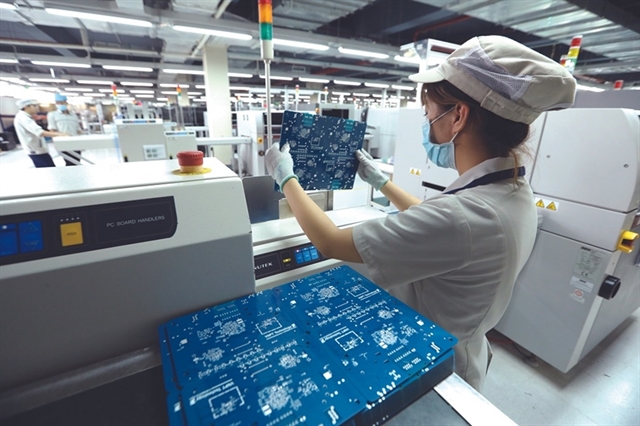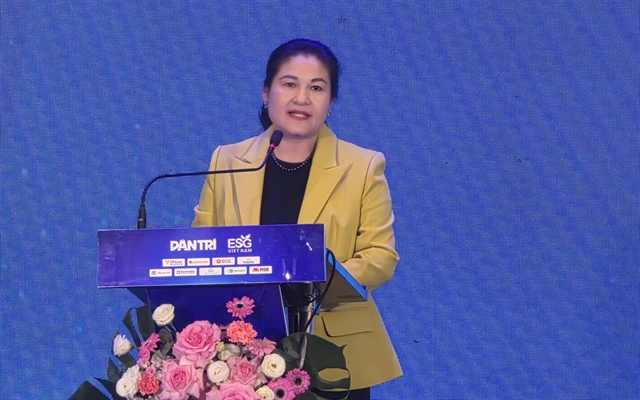 Opinion
Opinion

 |
| Trịnh Xuân Đức, Director of the Science Institute of Infrastructure Engineering and Environment. — Photo courtesy of the Ministry of Industry and Trade |
Trịnh Xuân Đức, Director of the Science Institute of Infrastructure Engineering and Environment (SIIEE), spoke to the Industry and Trade Newspaper about environmental industry development.
How is the environmental industry building and developing in Việt Nam?
Like any other industry, the environmental industry must have input materials, production value chains, services, technology, research and training systems, along with accompanying policy and financial corridors.
In this field, the main input material is waste, from industrial production to daily life. From that source of raw materials, the environmental industry is formed through many components.
The Law on Environmental Protection 2020 clearly specified these components, including equipment production, treatment technology, collection and transportation services, waste recycling and trading system, technology research and development, training and communication to raise awareness and policy as well as financial ecosystem to operate the entire system.
The environmental industry can be divided into four levels of development. The first level is 'cleaning', which means treating waste to return it to the environment. The second level is 'recycling', turning waste into raw materials. The third level is 'circulation', closing the production, consumption and recycling cycle. And the highest level is 'zero emissions', building a production and consumption system that does not produce waste at all, or if it does, it emits at a minimum and controllable level.
At present, Việt Nam has mainly implemented the first level, pollution treatment, environmental cleaning, and has only begun to approach the second level, recycling.
Circular models are still fragmented and small-scale, while the 'zero emissions' level is still a distant goal.
In other words, the environmental industry in Việt Nam is still very primitive and not fully formed.
What are the obstacles that are hindering the value chain's full formation in the environmental industry?
The specific obstacles that hinder the formation and development of the value chain in the environmental industry – particularly in technology, equipment, solid waste treatment and recycling services – are:
The gap in policy frameworks. The current policy system lacks continuity and consistency from central to local levels. When the legal framework is unclear and unstable, it becomes very difficult to implement. This creates confusion and limits the ability to call for social resources.
There is also a gap in enforcement and incentive mechanisms. Even when a company make a proper investment in recycling or waste treatment, they still cannot effectively access supportive policies. Policies are slow, inflexible and do not adequately reflect businesses’ practical needs. Delays in issuing specific mechanisms prevent many pioneering models from being scaled up.
Also in science and technology. Although a number of companies and research institutes have mastered some waste treatment technologies on a small scale, most have yet to develop these into commercial scale. The lack of support mechanisms for piloting, insufficient application areas, and lack of investment continue to trap potential technologies at the research stage.
In technical infrastructure and supporting industries, the gap exists not only in the environmental industry but the entire national industrial sector.
Việt Nam lacks foundational mechanical manufacturing industries and capacity to produce core components, resulting in continued imported recycling and waste treatment lines and equipment. A company might be able to manufacture an incinerator shell, but controllers, processing cores, software and other critical parts must be imported. Without mastering technical infrastructure, it is very difficult to build a sustainable and self-reliant value chain.
There is also a financial gap caused by the lack of effective allocation for financial resources. Environmental enterprises, especially small and medium ones, find it very difficult to access credit capital, including medium- and long-term loans. Although green credit funds and environmental funds have been established, their operations have not been effective and have yet to generate real incentives for business investment.
Most serious is the gap in awareness. Many leaders and the community fail to properly recognise the role of the environmental industry as a strategic economic sector. Waste is still regarded as something to discard rather than being seen as a renewable resource.
All these gaps have prevented Việt Nam’s environmental industry from fully forming a closed value chain. If these issues are not thoroughly and systematically addressed, we will continue to remain stuck at the level of 'environmental cleaning', unable to progress to the circular or zero-emission levels, meaning we cannot create a truly green economy.
For the environmental industry to become a key spearhead sector, not only meeting internal demand but also aiming to export technology and services, the above gaps must be filled promptly with innovative thinking and breakthrough policies.
What development model is most suitable for Việt Nam’s environmental industry? What key factors should be prioritised for sustainable and effective development?
To develop the environmental industry methodically, Việt Nam must first clearly identify a suitable macro-oriented development model.
Looking at the world, successful countries each choose a model fitting their capacity and development goals.
For example, South Korea centres on developing core technology. The Government strongly supports enterprises to master technology, forming a professional market and encouraging innovation. The core of Korea’s model is technology ownership, market development and innovation.
China chooses large scale, highly concentrated and comprehensive infrastructure investment. Their industrial parks are cluster-based, synchronising equipment, technology and operation. State-owned enterprises lead with the aim of localising technology for domestic markets before international expansion. Consequently, most recycling and waste treatment equipment in Việt Nam are imported from China, a fact we must frankly acknowledge.
The US chooses a different path, focusing on pioneering technologies, moving directly into artificial intelligence, big data, and fourth industry platforms.
I think Việt Nam needs a unique model but must converge key factors: mastering technology, private enterprise leadership and the State as an enabling architect.
Mastering technology is vital. We can start with small-scale technologies, but must advance to independently designing and manufacturing key treatment and recycling equipment, such as wastewater treatment and waste sorting. It requires strong State support in finance and testing infrastructure.
Private enterprises must play a central role. Businesses are market-sensitive and ready to invest and innovate when opportunities arise. The State’s role is to create institutions, build legal frameworks, connect businesses with research institutes and universities, and promote innovation centres as well as technology incubators to nurture new products and business models.
Investing comprehensively from research to commercialisation is also important. Good technology cannot flourish without capital to build factories, pilot test, and market products. The State must be willing to invest, even subsidise at early stages, so businesses can compete with imported products. Only when domestic technology is strong can exports be considered.
Finally, we must overcome the 'market self-regulation' mindset. For a nascent industry like environmental protection, without State support, businesses struggle to survive, let alone develop. Environmental technology products require a long, difficult process before reaching users, immediate success cannot be expected. — VNS




